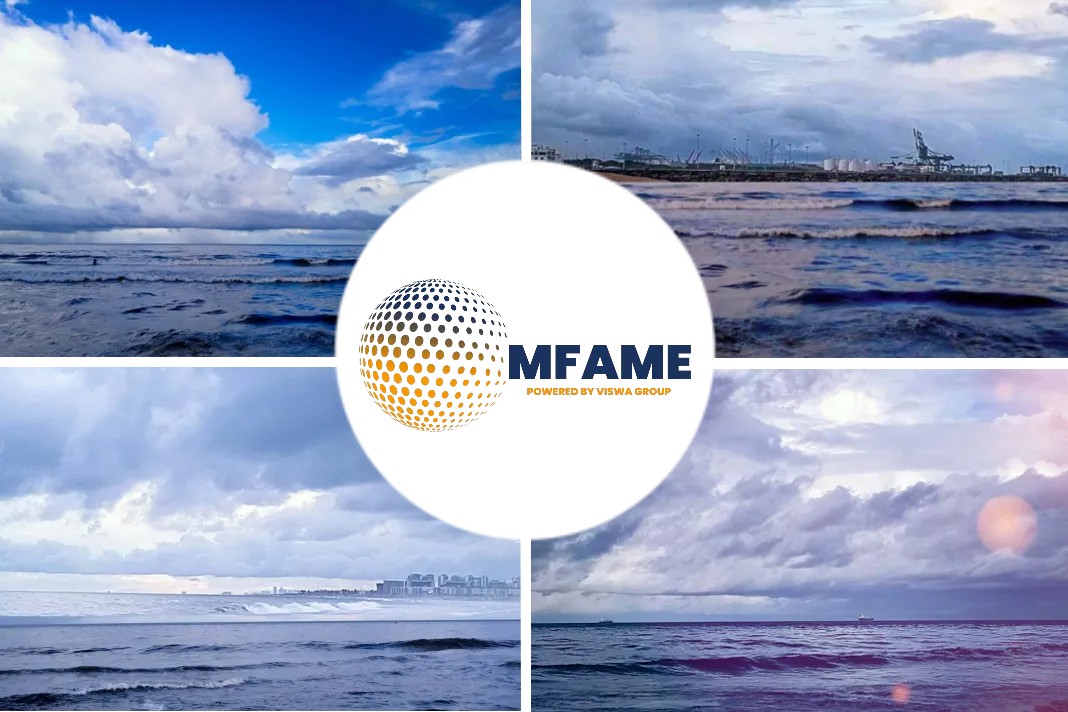A recent news article published in the Trade Finance Global states that DCSA on why the industry must act to accelerate eBL adoption.
The world of shipping is changing fast
The world of shipping is changing fast. In the span of a few years, digitalisation has taken the industry by storm, cultivating innovation within the supply chain.
At Sibos 2022, Trade Finance Global (TFG) spoke with Niels Nuyens, program director at Digital Container Shipping Association (DCSA), to learn more about digitalisation in the shipping space.
DCSA is a global association of container carrier operators who have come together to address an industry problem: the lack of a common approach to digitalisation. This issue prevents system interoperability and hinders seamless data exchange across the supply chain.
“Implementing digitalisation as a solution to improve efficiency is what SWIFT has done in banking to drive interoperability across the banking industry, and that is what DCSA is doing in container shipping for those participating in global containerised trade,” said Nuyens.
DCSA’s Digital Trade team has been looking at the standardisation and digitalisation of the end-to-end documentation process in container shipping.
The DCSA team currently focuses their work on three key areas:
- Cargo visibility: primarily track and trace technology to help shippers determine where in the world their cargo is at a given point in time.
- Asset productivity: primarily the productivity of a vessel, particularly with regard to port calls and schedules, but also container productivity.
- Digital trade: standardising and digitalising carrier-issued trade documentation to improve interoperability, efficiency, accuracy and sustainability in international trade, starting with the electronic bill of lading (eBL).
In each of these areas, the DCSA team strives to address the challenges from both a standardisation and digitalisation perspective to ensure interoperability, which enables the seamless exchange of information.
“Standardising means making sure we talk the same language and use standard definitions so that when data is exchanged, our systems understand each other and are able to communicate,” Nuyens said.
Bills of lading vs. electronic bills of lading
While there are some variations in the usage of a bill of lading (BL), it is always a contract of carriage, a receipt for the cargo, and in many cases, a document of title. Put simply; it is a legal document between a shipper and a carrier detailing the type, quantity, destination, etc., of goods being shipped.
Associations in the shipping space––the International Federation of Freight Forwarders Associations (FIATA), the Baltic and International Maritime Council (BIMCO) and DCSA––have standards for the bill of lading.
Nuyens said, “By looking at the approaches to digitalising bills of lading, we have made sure that the eBL standards set by BIMCO, DCSA, and FIATA are closely aligned.
“To give you an example, we’re going to run a proof of concept on eBL platform interoperability with ExxonMobil.”
ExxonMobil ships high volumes of bulk cargo and many containers as well.
Specifically for organisations like ExxonMobil, it’s critical that the various standards are aligned, whether BIMCO sets them for bulk shipping or DCSA for container shipping.
This is because today Exxon may ship containers, tomorrow they may ship bulk, and they can use eBL for each type of cargo regardless of which carrier or platform they use.
Legislation is vital, but it is not an obstacle to adoption now
Nuyens said, “Many in the industry are talking about the United Nations Commission on International Trade Law (UNCITRAL) Model Law on Electronic Transferable Records (MLETR), which is going to help in terms of establishing a universal mindset that digital documents are as legally valid as paper documents.
“This is great; however, in practical terms, every organisation can already begin to adopt eBL.”
The platforms that provide eBL solutions today in the industry already have their own legal frameworks that support international trade.
This means you can legally issue digital bills of lading now, as long as all parties are on the same platform.
Nuyens added, “While existing eBL platforms offer legal compatibility, none of them currently offer technical interoperability.
“Companies that need to exchange eBLs with each other often aren’t on the same platform.”
Without interoperability, which requires standards, a trade finance bank on one platform can’t exchange shipping documentation with a stakeholder on another platform.
This means companies have to subscribe to multiple platforms to work with different clients–– which is a challenge in the complex shipping ecosystem.
With much of the rhetoric focusing on the need for legal change, including the adoption of MLETR and expected changes to UK law, many organisations are under the false impression that they need to wait for this to happen first.
Nuyens said, “There clearly is momentum in the industry.
“The time to take action is now. Let’s stop looking at someone else to go first. We must embrace the opportunity that’s in front of each of us right now.”
Did you subscribe to our daily Newsletter?
It’s Free! Click here to Subscribe
Source: Trade Finance Global























